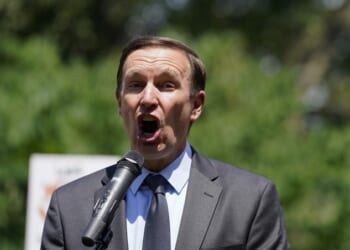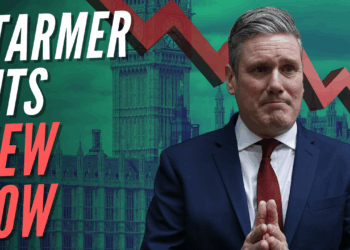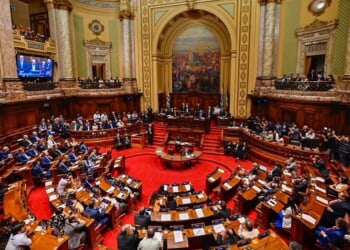A couple of days ago, John Rentoul of the Independent website highlighted this handy chart from Wikipedia, a sort of progress bar for the current Parliament combined with a polling summary:
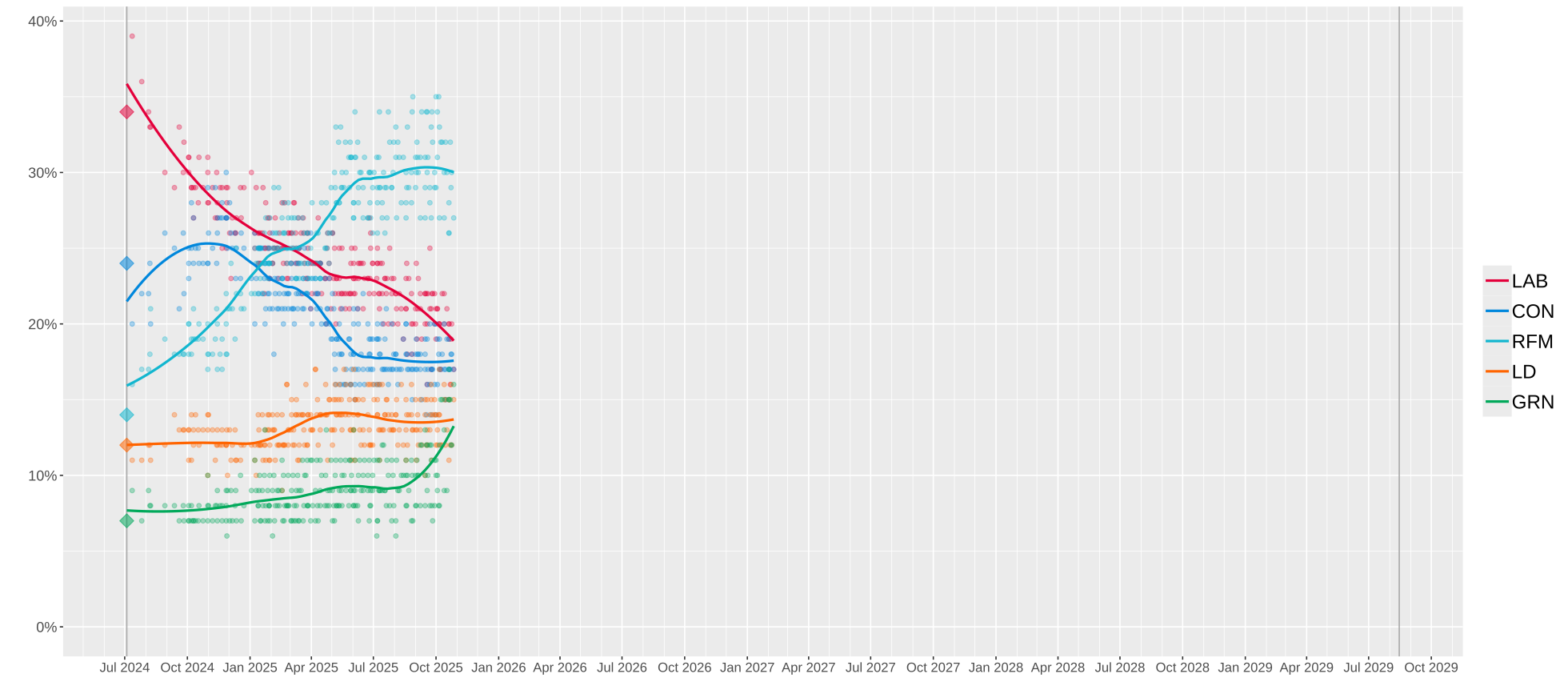
His point, and certainly the most striking takeaway from the most recent months, is that there has been a clear and substantial shift from Labour to the Greens since the summer – one large enough to put the latter within touching distance of pushing the Liberal Democrats into fifth place.
But our focus is on what Conservatives should make of it. Dan Hodges offers a set of observations CCHQ would probably be happy with:
“…three other main takeaways: a) Clear evidence Kemi Badenoch has finally staunched the bleeding. b) Further clear evidence Reform have plateaued. c) No evidence Labour has reached its floor under Keir Starmer. If anything, the collapse is accelerating.”
It is certainly better for the Tories that their polling has stabilised than had it continued on the sharp downward trajectory it was on until June – and given that the recent relationship between their polling and Reform UK’s stands out as clearly as Labour’s to the Greens’, Reform plateauing is likewise a good sign.
But the picture painted by the whole chart is still, I think, very bleak – and not just because we’re almost a month on from the Party Conference in Manchester and despite that being widely held to have gone pretty well, and a sense that the Conservatives have been on the front foot several times in the weeks since, there seems as yet to be no sign of any polling bounce off the back of it.
(Kemi Badenoch had a good conference; it boosted her standing with the membership and quieted chattering about her leadership. But as I wrote previously, conferences are for party leaders much longer on risk than reward; a bad one can precipitate disaster, but a good one tends merely to avoid it.)
The other problem with any attempt at a rosy interpretation of the polling is simple: that if Badenoch has “staunched the bleeding” she has staunched it at well below the point she started at, and that the bleeding itself began pretty much the moment she became leader.
From the aftermath of the general election up until last November, the Conservatives were recovering at about the same rate as Reform was rising. Yet that was the only period in this parliament when the Opposition seemed to be actually benefiting from the precipitous collapse of the Government’s support; since then, Labour’s freefall has continued but the Tories have dropped around seven points, and are now bumping along with poorer numbers than they posted at last year’s existentially bad election.
It would almost certainly be unfair to pin the blame for this entirely on the leadership. One of the big problems the party faces in this parliament is getting media attention, and last year’s leadership contest had the effect of keeping the media engaged and making the Party a story in the relatively quiet summer months. (One suspects this had much to do with last year’s conference having that slightly manic do-they-know-they’re-out-of-power edge to it.)
Nonetheless, if Badenoch’s team would want her to accrue any credit from improving the Party’s poll position in future – and they would – or indeed for “staunching the bleeding”, then she has too to own the other side of the coin.
Looking at the chart again, we can see two distinct phases in the decline of the Conservatives’ polling: a period from last November to around March this year when it lost momentum and started shadowing Labour’s downward trajectory, and then a more precipitous fall between March and June which is mirrored by a surge in Reform’s share. What explains this?
There are doubtless several theories, but I fear that it shows in part the price the party is paying for one major misjudgement on Badenoch’s part: the decision to go slow on policy and focus the early part her leadership on internal matters on the basis that the next election was years away.
It’s not that there was no logic to this idea, and indeed we might well be much better off if political and media life still operated at that pace. But it doesn’t. Badenoch took the helm of a party which was slowly recovering but faced, for the first time in modern history, the serious prospect of being overtaken by a challenger to its right. The correct tactical response, however we might deplore it philosophically, ought to have been a frenzy of activity aimed at keeping the Tories in the spotlight and ahead of Farage.
Instead, the Party all but disappeared from the national conversation for months – to such an extent that maintaining the Conservative focus of our morning newslinks turned into something of a challenge, as there were many days with only one mention of the Tories and no few with none at all.
This will, inevitably, have given more space to Farage and his plague-on-both-your-houses message, which would explain why the Conservatives started shadowing the Government’s falling ratings. This in short over delivered Reform UK its long-awaited crossover moment, and it was only a couple of months after this that we see the second, more dramatic decline in Tory fortunes as Reform cannibalises their vote to surge ahead of Labour – perhaps reflecting a dividend for Farage of addressing the perennial credibility problem (‘they can’t win’) faced by all challenger parties.
Other explanations are probably available, and there is of course no guarantee that all these lines won’t rearrange themselves (perhaps several times) between now and the next election.
But leadership is accepting that the buck stops with you, and when you get down to the numbers, the big question for Badenoch and her supporters is why she inherited a party polling at 25 per cent and has “staunched the bleeding” at 18 per cent – and done this in the context of a continual and precipitous collapse in the Government’s own numbers.

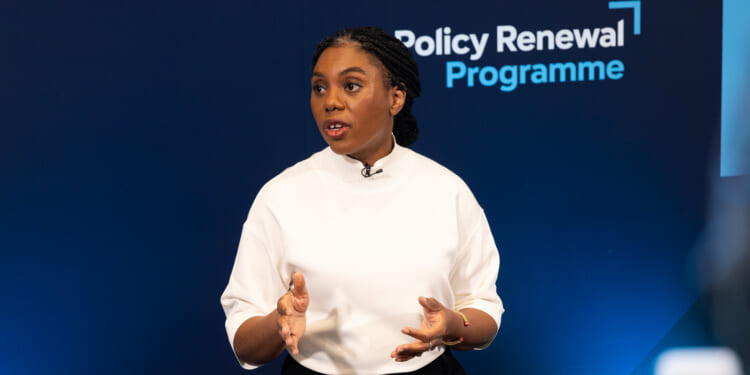
![Scott Bessent Explains The Big Picture Everyone is Missing During the Shutdown [WATCH]](https://www.right2024.com/wp-content/uploads/2025/11/Scott-Bessent-Explains-The-Big-Picture-Everyone-is-Missing-During-350x250.jpg)






